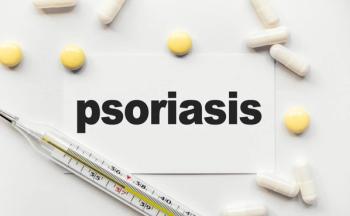
Mobile App Shows Promise as Obstructive Sleep Apnea Risk Assessment Tool
A mobile app was shown to be feasible in identifying risk of obstructive sleep apnea and associated symptoms, as well as promoting management recommendations among an outpatient cohort.
A mobile application developed for obstructive sleep apnea (OSA) risk assessment was shown to be feasible in identifying risk factors of OSA among an outpatient cohort. Results were published recently in
Despite a high prevalence and known symptoms of snoring, breathing pauses, and excessive daytime sleepiness, diagnosis of OSA remains largely underreported and subsequently
With symptoms occurring at night and potentially unnoticed by patients, the gold standard for OSA diagnosis, polysomnography, was noted by the researchers to be costly, technique sensitive, and largely unavailable in the home, all potential obstacles amid the pandemic.
“Hence, questionnaire-based OSA risk screening may serve as a viable, low-cost, easily available alternative for early screening, especially in developing countries,” they added. “Over the years, some mobile health applications have also been devised for OSA assessment…. but these are complicated commercial applications and majorly target the adult age group.”
Developing their own digital OSA risk-assessment tool using preliminary questionnaires and age-specific standardized questionnaires (
In the study, internal validation by manual and mobile-based methods was performed on 30 random patients, with nonparametric tests assessing the statistical differences between OSA risk and non-OSA risk variables.
From the cohort, 98 of the 100 adults were included in the final analysis, in which prevalence of OSA risk was 21.4%; 11 patients had low, 9 had intermediate, and 1 had high OSA risk. Several symptoms identified by the mobile app also were significantly associated with OSA risk in adults:
- Neck circumference (P = .0001)
- Waist circumference (P = .001)
- Body mass index (P = .008)
- Daytime sleepiness, headache, and mouth breathing (P = .0001)
Notably, findings of the binary regression analysis showed that neck circumference had the highest effect on OSA risk in adults (odds ratio [OR], 3.69; 95% CI, 1.40-9.72).
An 8% prevalence of OSA risk was also found among the 100 children aged 6 to 18 years who were assessed, with risk factors of dry mouth on awakening, daytime sleepiness, mouth breathing, and nocturnal enuresis noted.
“The patients with low OSA risk were suggested standardized preventive management counseling and orthodontic interventions, while medium to high risk underwent sleep specialist referrals.”
In concluding, the study authors said the cost-effective tool can be advocated for self-evaluation, early detection, and awareness in pandemic times. “The future upgraded versions may include preventive modules and real-time coordination with the nearest sleep clinics and specialists.”
Reference
Kapoor P, Chowdhry A, Sengar P, Mehta A. Development, testing, and feasibility of a customized mobile application for obstructive sleep apnea (OSA) risk assessment: a hospital-based pilot study. J Oral Biol Craniofac Res. Published online November 11, 2021. doi:10.1016/j.jobcr.2021.11.004
Newsletter
Stay ahead of policy, cost, and value—subscribe to AJMC for expert insights at the intersection of clinical care and health economics.







































